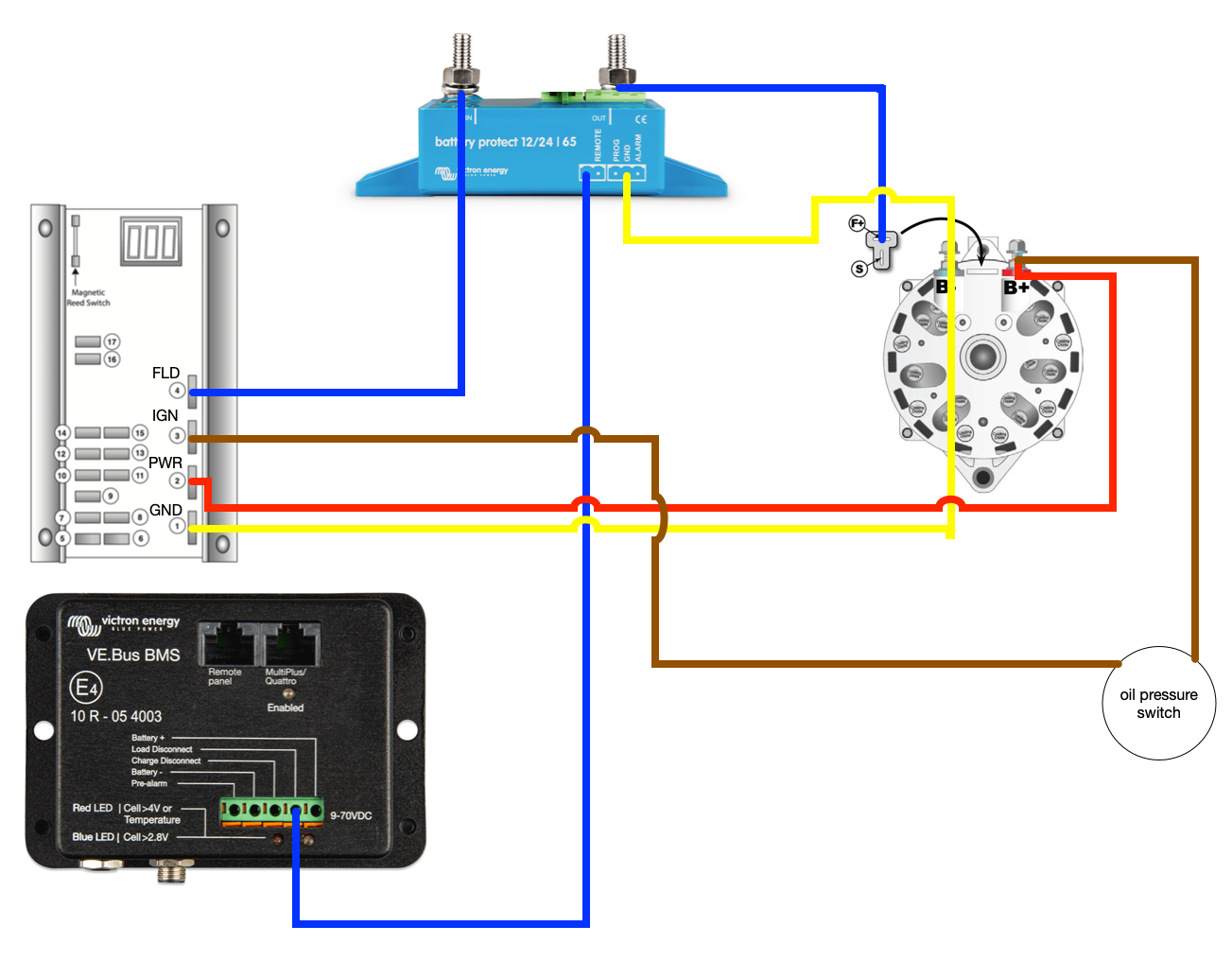I'm trying to use a Battery Protect to switch the ignition input on an external voltage regulator, to disable alternator charging. According to the Victron manuals, if I connect the ve.bus BMS load disconnect to the battery protect remote H/+ terminal, then the Battery Protect should disconnect when the charge disconnect line floats.
I've programmed the Battery Protect to mode 0-C — the lithium mode.
I'm trying to test to make sure this is working, but when I disconnect the BMS charge disconnect from the Battery Protect H/+ terminal, the relay continues to remain closed, and I have full voltage on both the input and output for the battery protect.
Can someone provide some suggestions?




